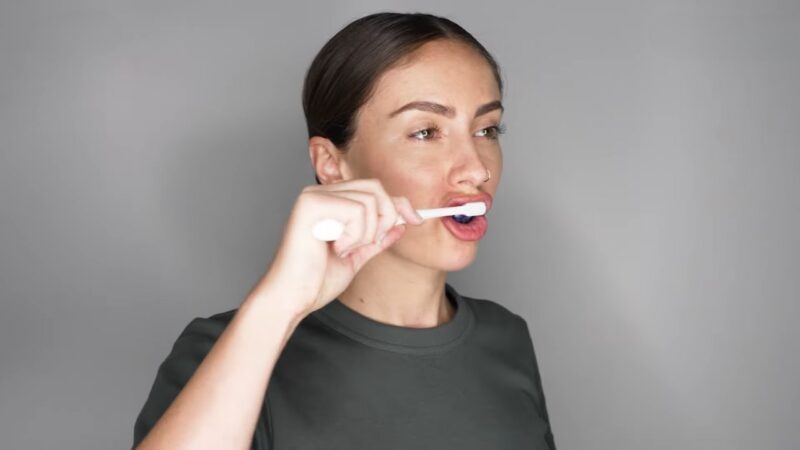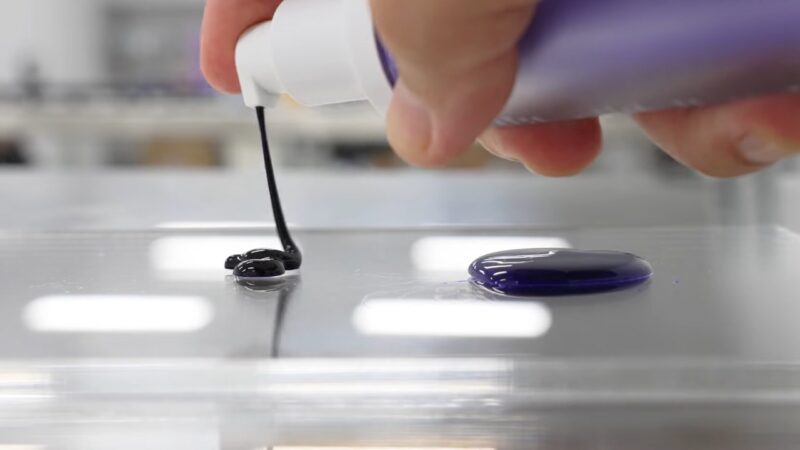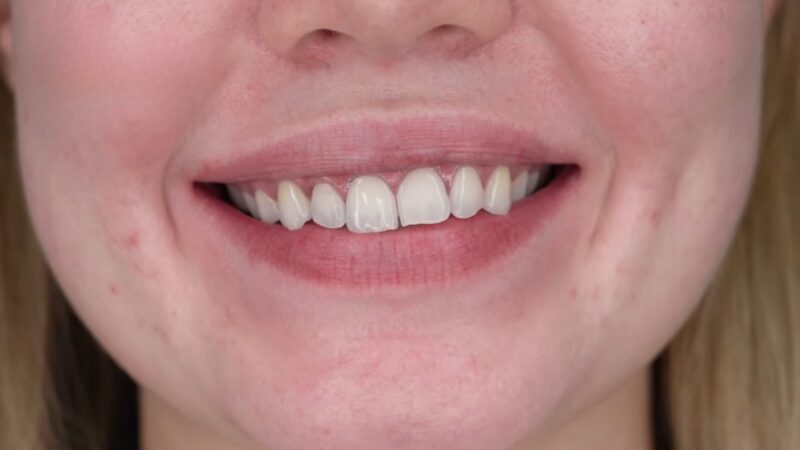Purple toothpaste has gained significant attention on social media for its color and promise of instant teeth whitening.
But when you look outside the ads, is it something you should try?
Let us talk about it.
Showing the Ropes

Purple toothpaste is a dental care product that stands out due to its vibrant hue and its claims of providing immediate teeth whitening effects.
Unlike traditional toothpaste, which usually comes in white or pastel colors, purple toothpaste uses color-correcting technology to mask the yellow tones on the surface.
This toothpaste typically contains ingredients such as hydrated silica for mild abrasion, sodium fluoride for cavity prevention, and various colorants, including purple pigments.
The concept behind purple toothpaste is rooted in the color wheel theory, where opposite colors neutralize each other.
Purple is opposite to yellow on the color wheel, making it effective in counteracting yellow discoloration temporarily.
When applied, the purple pigments in the toothpaste coat the teeth, creating an optical illusion that makes the teeth appear whiter.
Compared to traditional toothpaste, purple toothpaste does not necessarily clean the teeth any better but adds a cosmetic benefit.
Traditional toothpaste focuses on cleaning, plaque removal, and providing fluoride to strengthen enamel.
In contrast, purple toothpaste offers an immediate, albeit short-lived, whitening effect, making it more of a cosmetic accessory than a substitute for regular oral hygiene products.
How Purple Toothpaste Works
The working mechanism of purple toothpaste is based on color-correcting technology, a principle widely used in the beauty and cosmetic industries.
Color-Correcting Technology

Color-correcting technology leverages the science of the color wheel, where opposite colors can cancel each other out.
In the case of purple toothpaste, the complementary color used is purple to neutralize the yellow tones on the teeth.
This approach is similar to how green concealer is used to neutralize redness on the skin.
By applying a color that is opposite on the color wheel, the unwanted hue is visually diminished.
Application of Purple Pigments
When applied, the purple pigments in the toothpaste sit on the surface of the teeth, creating a visual effect that diminishes the appearance of yellow discoloration.
These pigments are specifically formulated to be safe for oral use, providing a temporary cosmetic fix without harming the enamel or gums.
The pigments work by reflecting light in a way that offsets yellow tones, making the teeth appear whiter and brighter.
Brushing with Purple Toothpaste

The process begins when the purple toothpaste is brushed onto the teeth. During brushing, the pigments adhere to the enamel, forming a thin, imperceptible layer.
This layer is crucial for the color-correcting effect, as it ensures that the pigments are evenly distributed across the teeth.
This uniform coating helps achieve the desired optical illusion of whiter teeth.
Light Reflection and Color Neutralization
The pigments in the toothpaste create a thin, imperceptible layer that reflects light in a way that offsets yellow tones.
The reflection plays a significant role in the whitening effect.
By altering how light interacts with the surface of the teeth, the purple pigments mask the yellow hues, providing an immediate whitening result.
This method does not involve any chemical change or deep cleaning of the teeth but rather a superficial coating that tricks the eye into perceiving a brighter, whiter smile.
When considering options for teeth straightening, it’s important to weigh the effectiveness of Invisalign and braces, especially for complex cases.
Effectiveness of Purple Toothpaste

While purple toothpaste can provide immediate visual improvement, its whitening effects are temporary.
Users typically observe the results lasting only a few hours after application.
This temporary nature is because the toothpaste works by coating the teeth with purple pigments rather than chemically altering or removing stains.
The typical duration of the whitening effect can vary depending on factors such as:
- Eating
- Drinking
- Oral hygiene habits.
Activities that involve consuming food and beverages can quickly wear off the purple pigments, reducing the duration of the whitening effect.
It makes purple toothpaste an option best suited for short-term use, such as special occasions or events where an immediate whitening boost is desired.

However, it is important to note that purple toothpaste has its limitations. It does not remove stains or address the underlying discoloration of the teeth.
The product is purely cosmetic and does not offer any long-term benefits for dental health or sustained whitening.
For individuals looking to achieve lasting results, other dental treatments such as professional whitening procedures, whitening strips, or gels might be more effective options.
Summary
Purple toothpaste offers a unique and instant cosmetic solution for teeth whitening, but its effects are temporary.
For those looking to improve their smile further, advanced dental procedures like CEREC Crowns can provide durable and aesthetic results.
For lasting results, consult with dental professionals and consider other whitening options tailored to your needs.

